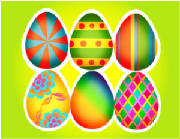The Music’s In Me.
When Jim Morrison of the Doors in 1967 screamed “We want the world and we want it now,” I understood
so clearly what he was referencing. Take us to another hidden dimension of this planet, allow us to engage with the world
in ways no one in our time and place deems appropriate. Hell, “when the music’s over, turn out the lights.”
There’s no reason to go on without that pounding aesthetic to push us on down the road.
~Joe Kincheloe, Knowledge and Critical Pedagogy: An Introduction,
p. 20)
I just had to add yet another dimension to
this website, and since it's so important, it rises to the top. The music dimension of Kincheloe’s work is amazing,
prolific, and profound. While some of the music he references is “first dimensional” in that he directly references
songs or lyrics, there are deeper dimensions to his use of music and even his “first dimensional” or “level
one” uses of music are wide open for deep interpretation. I discovered this fairly early in my research, after he passed
away, after which I also suddenly began to see all of the special music messages he left for me in his communications and
emails. That we had a hidden love relationship (at higher levels of consciousness; we are not supposed to talk about these
things) is easily revealed simply by examining these messages, but that’s not my main purpose here (I explored that
in the dissertation).
My main purpose is to show how he used the music dimension
to speak to us on different levels and to open up hermeneutical analysis. This works to expand understanding dramatically
and it, naturally, provides an emotional dimension, which he stresses is so important, and, in particular, it was one
of the ways he was able to weave in his “golden strand of love” into his work. Throughout
my blogs, I had performed this form of analysis on song lyrics and I also did this in the dissertation, analyzing some of
the music he had embedded in his work. It’s a valuable exercise when one comes across references to music in Kincheloe’s
work to gain deeper understandings of what he’s trying to convey. He was as prolific with his use of music as he was
with writing in general.
Observing how Kincheloe has incorporated music in a variety
of ways can give us ideas for ways we can incorporate it into the curriculum and make teaching and learning more fun, dynamic,
and interesting. I found that I learned so much from the music that kept coming my way throughout my research just by searching
deeper into the history and autobiographical/biographical information about the musicians as well as by performing multiple
levels of interpretation on the lyrics.
Thus, I will be adding
to this section various items of interest relating to synthesizing music into all areas of the curriculum and our daily lives.
I’ll post here some of the interpretations I’ve made of Kincheloe’s use of music. I have not even begun
to identify all of them! In an article about Kincheloe, an author had mentioned that his work seems “musical.”
His rhythmic writing style, along with the incorporation of music beneath conscious awareness contributes to this perception.
We literally hear music when reading his work, if not consciously, then often at the subconscious level. It’s just one
of the ways he almost “magically” used words.
Oh, and
when I first made the discovery, I called them “Easter Eggs” because I had not yet read up on hermeneutics and
phenomenological brackets. Here’s how I explain this:
For me,
the multidimensional critical complex bricolage became so natural and yet so complex that I sometimes was not aware of the
processes I was using as I wove through my discourse, but now I can go back and analyze them as I learn more about
the different intertwining methodologies/processes I used. For example, I had discovered that Kincheloe’s “phenomenological
bracketing,” which involves putting quotation marks around words, often yielded music when I searched them on google.
So then I referred to them as “Easter eggs,” and began searching them on Youtube as well. Thus, I serendipitously
discovered how frequently he used lyrics and song titles, which creates a music dimension to his work. As I did more research,
I learned that this was referred to as “phenomenological bracketing” for which we set aside our first thoughts
about the words in quotation marks (and parentheses) and explore other interpretations. I will interject here,
as well, that Joe used many cues to prompt readers to do this "phenomenological bracketing."
Thus, one of the first books I wrote is about how to find the Easter Eggs in Joe’s
work, and I even distinguished the different levels by which he has hidden them. This is not as off-the-wall as the elite
educators would like us to believe. Stephen King, one of Joe’s favorite authors, used Easter Eggs—little hidden
treasures that alert and informed readers can identify. Do a google search on Stephen King and Easter Eggs.
At any rate, identifying the music in Joe’s work can help take your learning up
a few levels, so try it! Here’s the book I wrote and you can download it for free.
The book will be coming soon . . . check back. The Music's In Me!
OK, I have added the book, below. It was written back
in 2009, so some of the links will not work. But that's ok. Use your own personal teachers and guides help you explore new
links that make the learning specially customized just for you.


